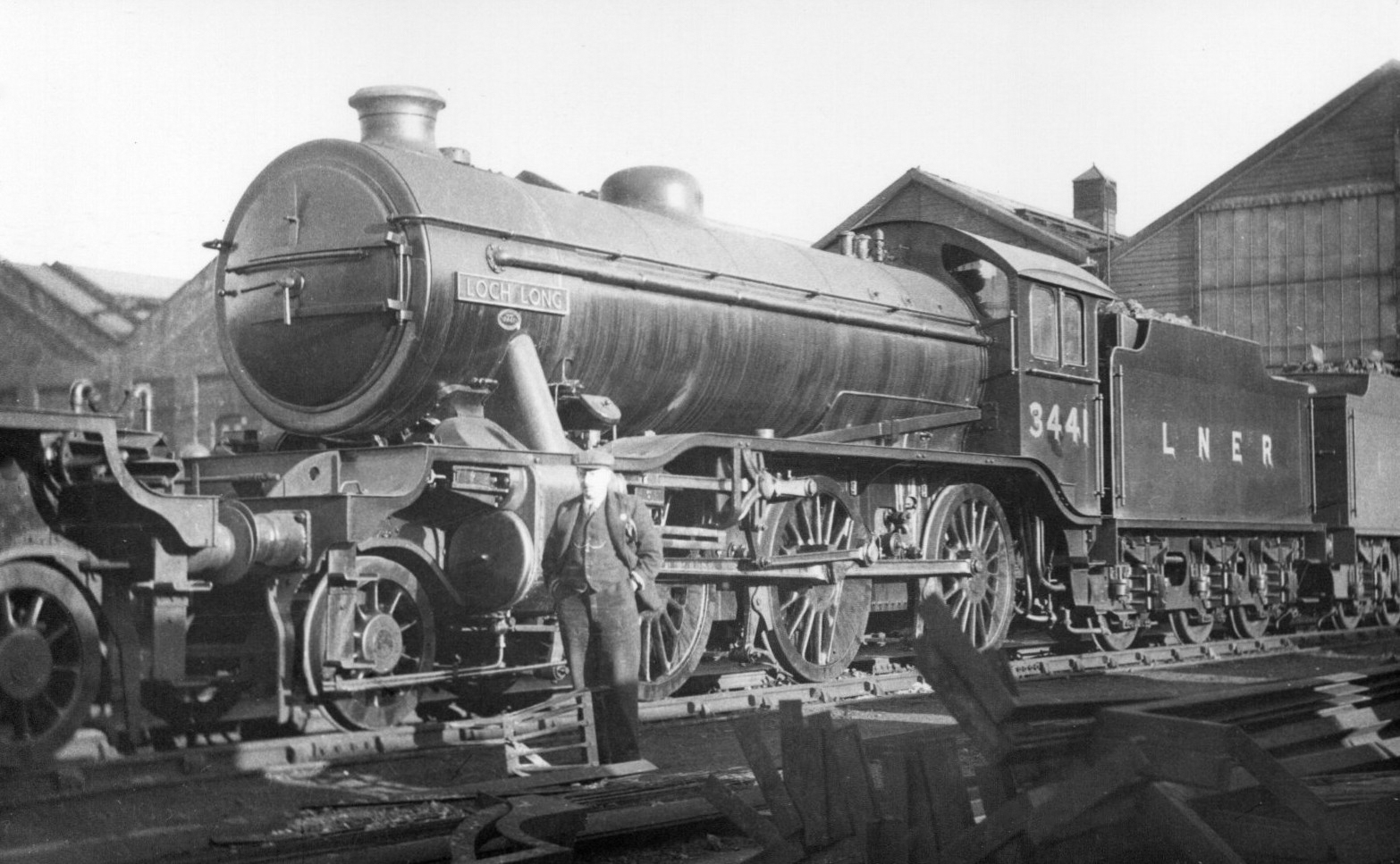Your cart is currently empty!
Sir Nigel Gresley
Sustaining the legacy

Class K4
The London and North Eastern Railway (LNER) class K4 is a class of 2-6-0 steam locomotives designed by Nigel Gresley for the steep grades of the West Highland Line.

The North British Railway (NBR) West Highland line to Mallaig via Fort William presented many operating problems due to its steep gradients and severe curves, combined with very restrictive axle loading limits. At Grouping in 1923, passenger services were being hauled by Reid class D34 ‘Glen’ 4-4-0s due to the axle loading restrictions. Heavier stock had already entered service, and was already resulting in some double-heading of the class D34s. An early proposal was to use the new Gresley class K3s to provide extra power, but they would have been restricted from the Mallaig section of the line, and was vetoed completely by the Civil Engineer after class K3 bridge tests were made.
By October 1924, a proposal appeared for a new 2-6-0 with 5ft 2in coupled wheels, a class K3 boiler, and three 18in by 26in cylinders. This proposal was dropped when the Great Northern (GN) section loaned fourteen class K2s for use on the line. These provided satisfactory, providing an improvement in power and adhesion. Also with class K3s displacing the class K2s elsewhere on the LNER network, new work was required for the class K2s and the loan became permanent in October 1925.


Work started on a new design in about May 1936. This design was based on the 1924 proposal for a 2-6-0 with 5ft 2in diameter coupled wheels, but with class K3 cylinders, a class K2 boiler, and a class B17 firebox. The boiler pressure was set at 180psi to provide a tractive effort of 32,939 lb, the frame was 5in longer than the class K3 frame, and a similar pony truck was used.
The new class K4, No. 3441 Loch Long entered service on 28th January 1937. The new locomotive quickly showed itself capable of hauling 300 ton loads to Fort William without assistance, but the boiler pressure was increased to 200psi in June 1937 to enhance uphill speeds. This resulted in a tractive effort of 36,599 lb.

Five more K4s were ordered on 16th February 1938, and these entered service between July 1938 and January 1939. Due to their design being specifically for a line with very specialised requirements, no further class K4s were built.
No. 3441 (BR No. 61993) Loch Long.
No. 3442 (BR No. 61994) The Great Marquess (originally named MacCailein Mor).
No. 3443 (BR No. 61995) Cameron of Lochiel.
No. 3444 (BR No. 61996) Lord of the Isles.
No. 3445 (BR No. 61997) MacCailin Mor.
No. 3446 (BR No. 61998) MacLeod of MacLeod (named Lord of Dunvegan before March 1939).

No. 3445 MacCailin Mor was rebuilt in 1945 with two-cylinders to class K1/1 at Darlington Works as the prototype of the class K1 of which 70 were built by the North British Locomotive Co. in 1949-50 for British Railways. Thompson entrusted the rebuilding of No. 3445 as a two-cylinder Mogul to his principal assistant Arthur Peppercorn. It became British Railways No. 61997, and was withdrawn from service in 1962.
Initially the class K4s were mainly used on the Glasgow to Fort William stretch of the West Highland line. They handled the gradients and continuous curves with ease, but they were not designed for the 20 miles of level track near Glasgow, and the 8.5 miles stretch alongside Loch Eil. The class V4s with their slightly larger wheels were more popular with the enginemen but were lacking in power. Eventually the Thompson class B1s appeared on the Glasgow to Fort William services from 1947, displacing the class K4s to the Mallaig stretch. The new Thompson/Peppercorn class K1s appeared in 1949 and after Nationalisation, LMS ‘Black 5’ 4-6-0s were also moved to the line. From this point onwards, the class K4s were concentrated at Eastfield and intended for use on West Highland goods trains only.


In 1959, the five class K4s were transferred to Thornton Shed for use on goods trains until October 1961 when four were withdrawn. The last class K4, No. 61994 The Great Marquess, was withdrawn in December 1961 and sold to Viscount Garnock for preservation. Now owned by Society President John Cameron and after a long main line career is now preserved on his farm at Balbuthie in Fife.
